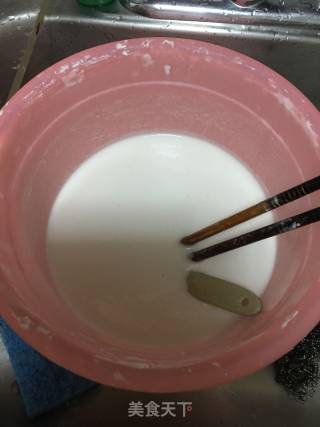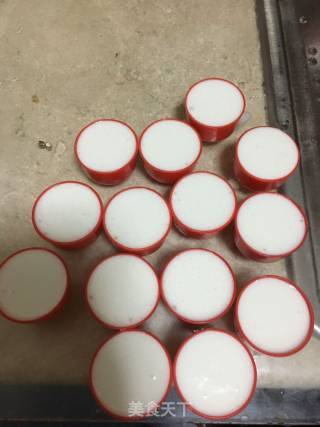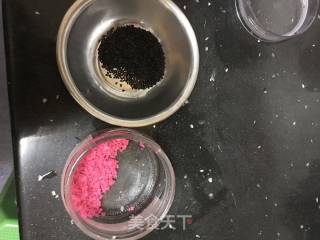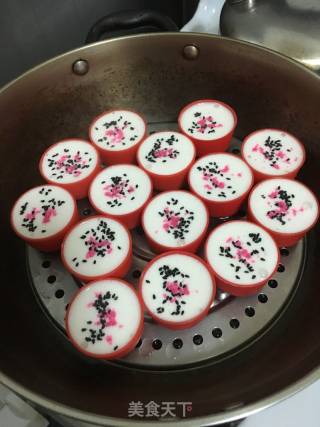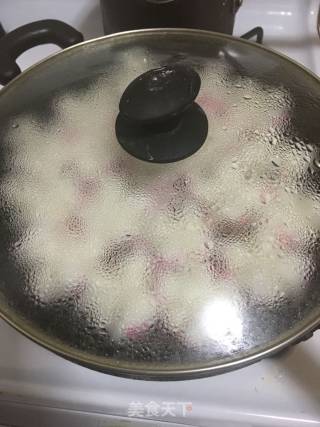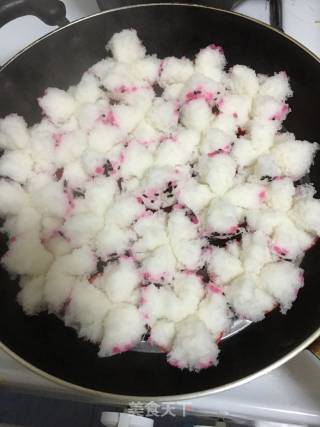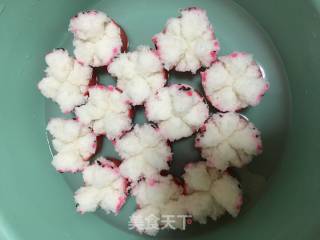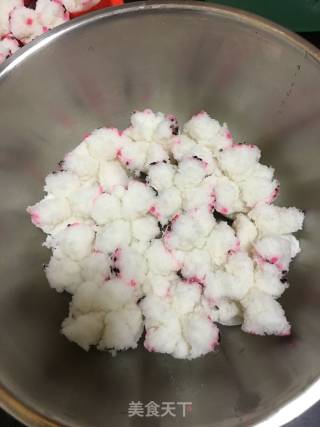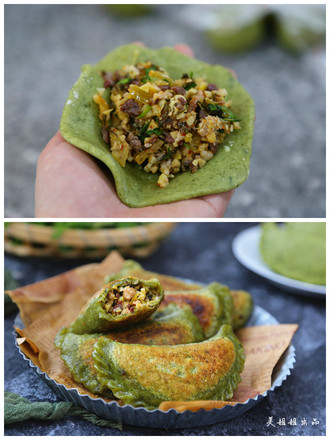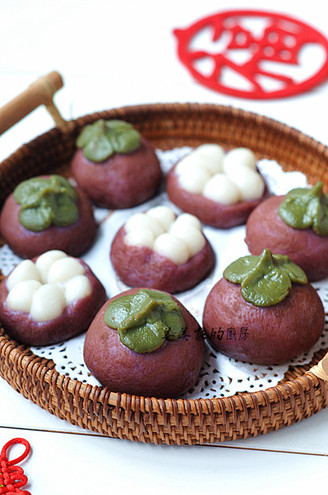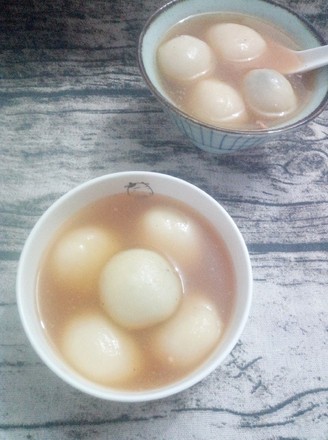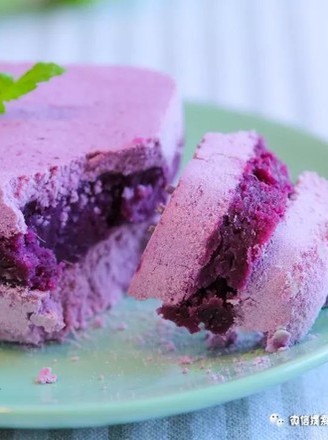Bowl Cake
1.
Pour half a pack of sticky rice noodles into a small bucket (any kind of container. Don't be too small). Use hot water to dissolve the sugar cubes and turn them into sugar water, then wash the sugar water into the rice flour, stir evenly, not too thin or too thick, and then add yeast and wrap it for fermentation. The rice milk will ferment and become high in about 4 hours, and you will find a lot of small bubbles on the rice milk. Stir it with chopsticks once to ferment. After about 4 hours, it will become higher again. Stir it again with chopsticks to ferment and it will be fine in about 4 hours .


2.
This is the first round. If you steam it right away, the steamed cake will be hard and salty. So I will pour out the prepared rice milk and leave half a bowl, re-add the sticky rice noodles, and ferment it three times as in the first step. Then discard the remaining half a bowl and re-add the rice flour to ferment three times. Then discard the remaining half a bowl and re-add the rice flour to ferment three times. This is the rice milk made at the end. When preparing to steam, add some alkaline water to make the steamed bowl cake less sour. And the bowl cake will not stick to your hands. Add sugar cubes in an appropriate amount (because I didn't add a lot of sugar cubes at the beginning). everything's ready
3.
Scoop the rice milk into a small cup
4.
Sprinkle black sesame seeds and butterfly slices (a large pink slice, cut into pieces by yourself)
5.
Put it in a pan and steam for about 15 minutes
6.
It is steaming...It is best not to open the lid while steaming
7.
Fifteen minutes passed, and it was a success. Isn’t it beautiful...
8.
Take the bowl cake out of the pot and put it in the water and ice it to take it out
9.
The loose, soft and sweet bowl cake is ready.
Tips:
It’s just that it’s more troublesome at the beginning and you have to pour it out several times. If you want to make it after you finish it, you can leave half a bowl of rice milk to make it next time, saving the time for fermentation. And the fermentation changes with temperature, sometimes 2 or 3 hours is good, sometimes 4 or 5 hours.



